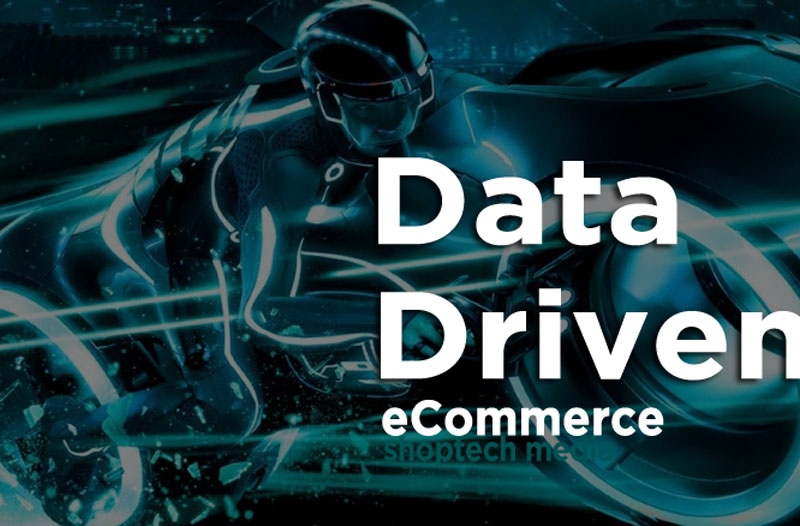Data-driven ecommerce is an indispensable concept for doing business online. As technology constantly evolves and continually shapes the buying behaviors of customers, your ecommerce strategy must also provide avenues for you to touch your customers in major aspect of their buying journey. Data-driven ecommerce strategy gives you that, as an online merchant, powerful ability!
Why is data-driven ecommerce strategy important?
The advance of technology has introduced customers to new buying behaviors, and the rise of ecommerce has provided retailers with new avenues to reach those customers. However, it has now become more and more difficult for small to medium retailers to remain competitive against giants and global online marketplaces who have unlimited resources while the margin of profit dwindle and the costs of meeting customer expectations continue to rise. Without leveraging data and analytics to your advantage, there is just no way you can compete with the ecommerce mountains like amazon and the like.
Enter data and analytics.
In responding to these huge challenges, ecommerce retailers are increasingly turning to data and analytics to make better business decisions and guide customer marketing initiatives. While some retailers are still learning how to best collect customer data, others possess it but are unsure what to do next. A new Forbes Insights brief,
“Data-Driven Retail: Extracting Value From Customer Data,” sponsored by Pitney Bowes, is focused toward retailers in the latter category, discussing how data can be used to better reach customers and compete more effectively across channels.
To get a better sense of their audience, online retail owners must first understand how to bring together analytics data sources, such as demographics, location and market data. Customer data, such as transaction histories and loyalty status, which are saved internally, are now beginning to make sense in terms of providing a better picture of the business direction.
Owners and managers can begin creating a detailed understanding of their customers, ideally on the way to establishing a trusted single view once these sources have been identified—and the data has been checked for accuracy.
Five Steps of a Data-Driven Retail Strategy You Can Implement Right Away
After getting a grip of why data and analytics is important, there are seven natural steps you need to learn to create a good data-driven retail strategy:
1. Ask relevant question: What is your “why”?
Your “why” will mostly determine and shape your strategy. This is where you set your intentions. What do you want to learn about? What is it that you are looking in the data? Be as specific as possible to focus your outcome.
If a business is solely about making more money for the owners, it’s probably not worth starting in the first place. Most if not all the successful business have successfully provide value to their target market. Google, for example, is not created for solely making money, but have provided a very valuable solution in the form of a search engine. Facebook has a very strong “why” to help us connect with more people, and so on.
Starting a business can be very tough with various pitfalls along the way, and a strong motivation—this “why” — can help us persevere. On the other hand, only when we can offer strong value can we grow our market sustainability.
2. Be informed and do your research: Competitor research gives you a better understanding of customer expectations
Studying what competitors are doing will give you a thorough insight on your customers’ expectations. It is likely that your competitors are selling the same product at a lower price or offering better service without charging the customers any extra amount. So while you keep a track of such things, you can lower your product price or focus on improving your service. Knowing what your competitors are offering would help you better understand customer expectations and hence you can modify the experience accordingly.
3. After understanding the state of your data, as well as competitors’, make an educated guess about the outcome.
Studying and Learning how your competitors do things allows you to have a good idea of what could be a better outcome of the strategy you are putting in place. Couple that with the knowledge gained through the analysis of data saved internally, and you will have begin to be more confident with your online business. No one can guess things 100% but your guess work is going to be nearest as it is from what is going to be your reality with data-driven ecommerce strategy.
4. Conduct an experiment: Test then retest your data-driven ecommerce strategy..
With a better information in your hand, born from educated guess you did in step 3, test your strategy. Start with a price test. Price tests are a great way to try out new pricing strategies to see the impact on margins and sales.
When you’ve got the right data, use it. If you don’t act on the data and actually use it to drive additional revenue and margin, you’re not capitalizing on the opportunity. Customer data and location analytics helps you to make sense of the information you have and then act appropriately.
Afterwards, retest everything. Data-driven ecommerce strategies require on-going attention. Customer and competitor data changes all the time, so keeping up with it is required to remain accurate.
5. Implement Shoptech Media Analytics to analyze the results: Did you get the outcome you expected? If so, why? If not, why not?
Why choose Shoptech Media Analytics?
One of the principle advantages of SM Analytics is that you are in total control of your website’s data. Your data is your own! Unlike remote-hosted services (such as Google Analytics, Webtrends or Adobe Analytics), you host SM Analytics on your own server and the data is tracked inside your Mysql database. You literally own the analytics!
Because SM Analytics comes with your installation of Shoptech Media ecommerce, you enjoy full control over your data. You can access the data easily via the SM Analytics Dashboard. Advanced users can use Custom Dimensions, Segmentation, or even run manual queries on the database in order to build advanced reports.
SM Analytics also protects your visitor privacy with advanced Privacy features.
When using SM Analytics for Web Analytics, you ensure that your visitors’ behavior on your website(s) is not shared with advertising companies.
No sampling of data with SM Analytics. SM Analytics always report all of your data and will not filter out some. You see the real performance of your ecommerce store right in your back office dashboard! There is no data limit with SM Analytics!
Read full Shoptech Media Analytics information here!
Additional ecommerce analytics resources:
How Data Analytics Enhances Ecommerce Business Performance
Using the Store Analytics Data to Your Advantage
5 Top Ecommerce Trend That Will Only Get Bigger in 2020
Ecommerce Analytics Presents Huge Advantages For Your Online Biz
In Conclusion
These five steps are the bedrock of using data in online retail. The saying “always be testing” is more true today than ever before. The hyper-competitive nature of online retail means that nothing is ever fully optimized, so you’ll need to keep striving for better conversions, revenue, and margins.










